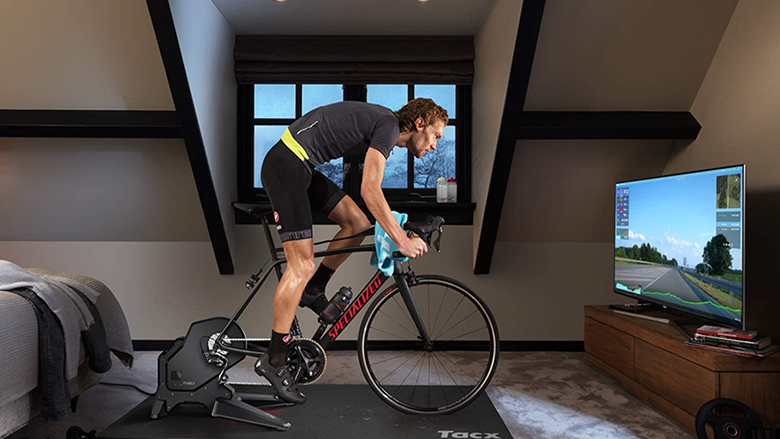
Gear up to crush the competition or simply maintain your fitness when the weather isn’t cooperating using the best indoor bike trainer. Hop on the latest smart trainer to enjoy virtual rides and races on popular apps such as Zwift and Rouvy. From high-end turbo trainers to basic stationary bike stands, here are our top picks for every type of cyclist.
If you’re craving a home spinning workout, don’t miss our home cycling bikes. You can also test your balance on bike rollers to mix up your indoor cycling routine.
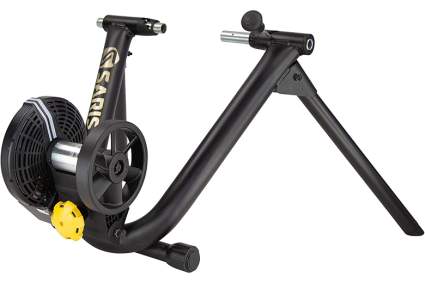
|
Amazon Customer Reviews
|
Price: $229.99 Shop at Amazon | Shop now Read our review |
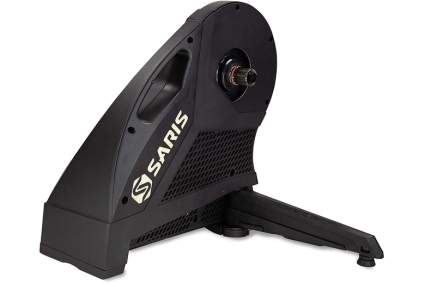
|
Amazon Customer Reviews
|
Price: $617.00 Shop at Amazon | Shop now Read our review |
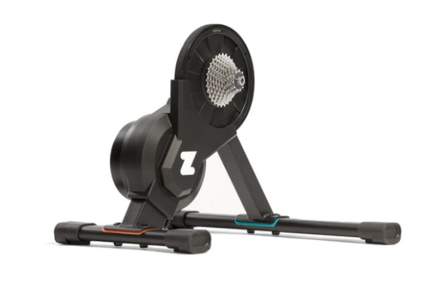
|
|
Price: $499.00 Shop Now at Zwift | Shop Now Read our review |
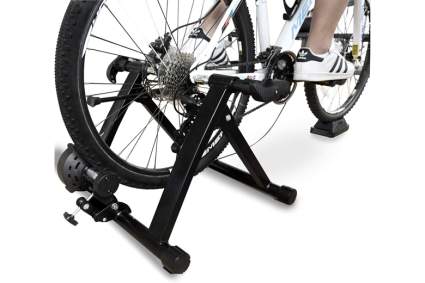
|
Amazon Customer Reviews
|
Price: $51.61 Shop at Amazon | Shop now Read our review |
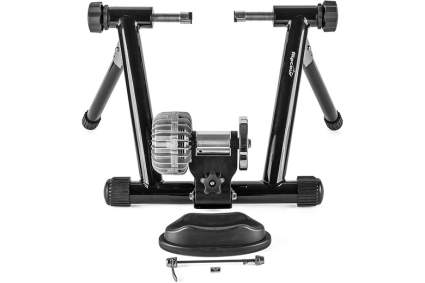
|
Amazon Customer Reviews
|
Price: $189.95 Shop at Amazon | Shop now Read our review |
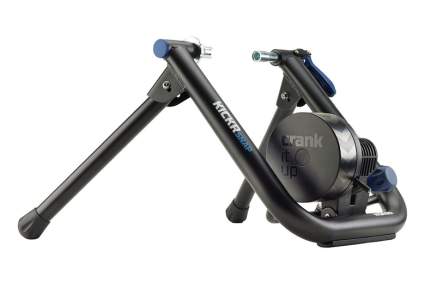
|
|
Price: $499.99 Shop now at competitivecyclist.g39l.net | Shop now Read our review |
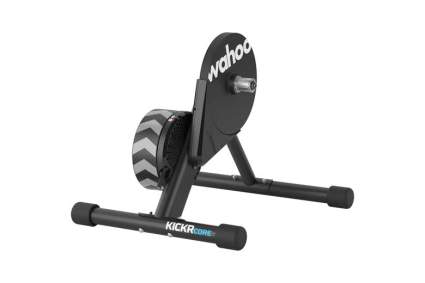
|
|
Price: $899.99 Shop now at Competitive Cyclist | Shop now Read our review |
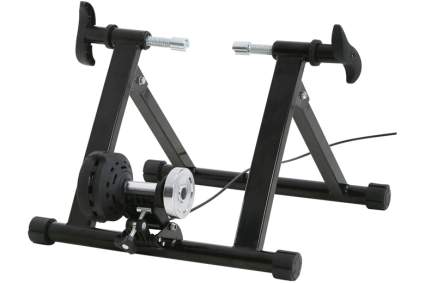
|
Amazon Customer Reviews
|
Price: $27.78 Shop at Amazon | Shop now Read our review |
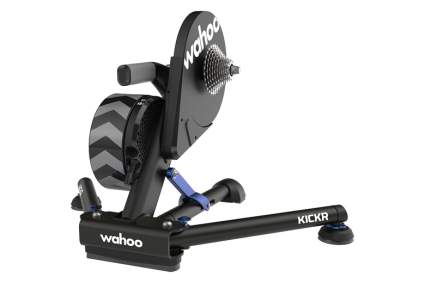
|
|
Price: $1,199.99 Shop now at competitivecyclist.g39l.net | Shop now Read our review |
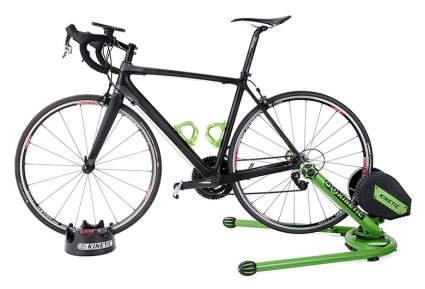
|
Amazon Customer Reviews
|
Price: $749.00 Shop at Amazon | Shop now Read our review |
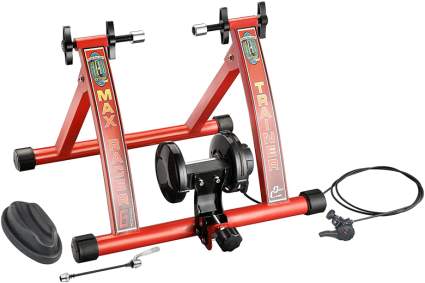
|
Amazon Customer Reviews
|
Price: $49.95 Shop at Amazon | Shop now Read our review |
-
1. Saris M2 Smart Trainer
Pros:- Fits most standard road and mountain bikes
- Integrated speed, cadence and power sensors
- Simulates up to a 15 percent climbing gradient
Cons:- Average noise level
- Doesn't fit 650C wheels
- Separate Zwift subscription required
The popular Saris M2 smart trainer makes training cycling fun by connecting you with popular cycling platforms such as Zwift and Rouvy. Compete with fellow riders during a virtual Zwift workout or forget you’re even riding indoors with an Augmented Ride using Rouvy. Integrated speed, cadence and cycling power data means you don’t need external sensors to track your training.
This smart trainer works with several tires, including 26, 27 and some 29 inches. It’s also designed for 650b and 700c wheels. An included quick-release skewer, along with multiple rear dropout settings, ensures this indoor bike trainer fits most standard road and mountain bike frames. While it’s a popular trainer for road bike enthusiasts, many mountain bike riders find that this trainer is a good fit for their bikes as well.
Whether your bike is designed for the road or trails, you’ll find yourself getting a meaningful workout once setup is complete. PowerTap technology provides accurate power readings within five percent. There’s also integrated ANT+ FE-C and Bluetooth technology for fast and easy data transmission. Bluetooth firmware updates keep the trainer updated.
Noise level is a concern many cyclists share when it comes to indoor workouts. This trainer is fairly quiet, reaching a decibel level of 69 at 20 miles per hour.
Another common concern is bike trainers feel nothing like your favorite riding routes. With climbing grade simulation up to 15 percent and progressive fluid resistance, your rides will seem more realistic with this indoor bike trainer. The trainer can also handle a maximum of 1500 watts at 20 miles per hour.
-
2. Saris H3 Direct Drive Smart Trainer
Pros:- Produces a maximum of 59 decibels at 20 miles per hour
- Works with Shimano 8-11 speed cassettes
- Compatible with Zwift, TrainerRoad, Rouvy and other popular cycling apps
Cons:- Trainer is a bit heavy for moving
- May periodically lose connections
- Not compatible with the Wahoo Fitness app
Not all indoor cycling trainers are quiet, but the Saris H3 Direct Drive Smart Trainer produces a maximum of 59 decibels at 20 miles per hour, which means you can suffer through even the most grueling training sessions without waking up others in your household. If you’ve used a previous generation H Series trainer, the H3 will be noticeably quieter. An improved drive system increases efficiency while minimizing trainer noise.
There’s more to like about the H3 than just its quiet operation, as it’s a fully equipped smart trainer that will make any indoor session much more manageable. For starters, you’ll find Bluetooth, ANT+ and FE-C connectivity, which means that the trainer will work with virtually any cycling device, including your favorite GPS bike computer. LED lights let you know when your device is connected.
If you’re looking for a bit of stimulation for your indoor training sessions, the H3 comes with a one-month subscription to the Rouvy training app. It’s also compatible with popular apps such as Zwift and TrainerRoad. If you prefer to train without apps, a headless mode provides a progressive resistance curve to stimulate tough outdoor sessions.
With features such as a 2,000-watt maximum power output at 20 miles per hour and a 20 percent climbing grade simulation, you may emerge from your winter training block feeling fitter and stronger than ever before. A power accuracy measurement of +/- 2 percent provides a realistic training experience, even if you’re a pro.
Whether you’re training for your next race or you’re simply looking to stay fit, the trainer measures your speed, cadence and power without any external sensors. A 20-pound precision-balanced flywheel provides maximum resistance for your most hardcore workouts.
This direct drive smart trainer works with Shimano 8-11 speed cassettes and eliminates the risk of wear and tear on the rear tire by connecting your bike directly to the trainer. It also has an integrated front wheel block to hold your bike steady, unlike most bike rollers for indoor cycling. Folding legs make it easier to move and transport the trainer, yet give it a wide and supportive footprint during use. The maximum combined rider and bike weight for this trainer is 300 pounds.
The CycleOps Hammer Direct Drive Smart Trainer is a slightly less expensive alternative. This smart trainer features Bluetooth Low Energy and ANT+ connectivity, so you can use it with your favorite virtual training apps.
Find more Saris H3 Direct Drive Smart Trainer information and reviews here.
-
3. Zwift Hub Smart Trainer
Price: $499.00Pros:- Highly social and interactive experience makes home workouts less boring
- Timed sprint and hill segments help push your limits
- Join other riders from all over the world day and night
Cons:- Doesn't fold for storage
- Noise level is about average
- Swapping the cassette requires some specialty tools
If you’re eager to try smart training without overspending before you’re fully committed, the Zwift Hub smart trainer is an excellent choice. It looks and performs much like the JetBlack Volt, with improved setup and integration. Plus, it’s much more affordable.
Whether you’re a beginner cyclist eager to try the gaming-inspired platform or you want an affordable smart trainer upgrade, the Hub is a solid investment. It’s easy to set up and automatically adjusts the resistance to match real-time gradient changes and naturally simulate outdoor riding.
Zwift sent me a test Hub smart trainer for an in-depth review. Liv also set me up with a Langma Advanced Disc 1+ demo bike with a standard 11-speed Shimano 105 cassette, which is compatible with the Hub trainer. I even received a pair of Liv Macha Pro shoes, which felt comfortable but stiff enough for optimal power transfer with each pedal stroke.
Unboxing and setup
As far as unboxing and setup go, everything you need to assemble the trainer is included. You’ll find a wrench, quick-release skewer, a power brick with three cables for international use and two adapter instruction cards. One is for quick-release skewers and the other is for thru axles.
It’s important to note that the trainer comes with a pre-selected cassette, which you’ll specify at checkout. Options range from 8-12 speeds. However, the cassette is only compatible with Shimano and SRAM.
If you use Campagnolo, XD, or XDR, you’ll need a different freehub. Changing the cassette on this trainer is a similar process to a road bike.
Once you’ve removed your rear wheel and secured your bike into place, spin for a few minutes to make sure that everything works properly. If you’re serious about indoor training and want to race on Zwift, it also helps to do a 10-minute calibration to get a precise reading.
Like other smart trainers, you have the option to cycle in ERG mode. It sets your resistance to a specific target wattage based on your cadence. For example, if you’re aiming for a 150w output, the resistance will automatically increase or decrease to keep you within range.
In just a few simple steps, you can download the Zwift app to your iOS or Android device, or Apple TV, connect your trainer via Bluetooth and start pedaling.
Before starting your first ride, you’ll want to set up the device you’re using for Zwift. The bigger the screen, the more you’ll get out of this interactive platform. Zwift recommends a tablet or laptop over a smartphone. After some trial and error, I found that an iPad Air with a 10.9-inch screen propped up on a music stand worked best for me.
How the platform works
Can’t stand the thought of training alone? With Zwift’s socially connected platform, you’ll always have company. Besides joining other riders when you start a ride, you can also interact with them along the way by sending high fives or instant messages. Achievement badges and awards are also available to keep you motivated from start to finish.
To get the full Zwift platform experience, I was invited to join a group media ride with Kristin Armstrong, former professional road bike racer and 3-time Olympic gold medalist. Along the way, we learned more about what makes Zwift’s platform unique.
For example, it’s highly motivational, especially if you’re into gamification and enjoy competing against others. From start to finish, it’s easy to interact with other riders and check your progress. Zwift’s intuitive layout offers a user-friendly experience for all levels.
On the right side of the screen, for example, you can see other riders around you, how close or far away they are, and the distance you’ve ridden. You can also view your profile to prepare for terrain changes or see how much longer you have to climb if you’re on a hill.
Depending on the ride and your intentions, you can participate in sprint or climbing segments. These timed sections are great if you’re in the mood for competing or trying to improve over your previous time.
For a monthly subscription fee of $14.99, you have unlimited access to an exclusive virtual cycling platform that instantly connects you to fellow riders around the world. From the navigation screen, you can find a ride or workout that matches your fitness goals. There’s something for everyone, whether you want to join a pacer group, find an event that aligns with your goals or just hang out, ride and meet new friends while cruising at a comfortable pace. A 14-day trial lets you explore the platform before committing to a subscription.
Find more Zwift Hub Smart Trainer information and reviews here.
-
4. BalanceFrom Stationary Bike Stand
Pros:- Compatible with road and mountain bikes with 26 to 28-inch wheels or bikes with 700c wheels
- Noise reduction technology with road tires
- Resistance controller is mounted on the handlebars for convenient shifting
Cons:- Loud with mountain bike tires
- Resistance may feel limited for experienced cyclists
- Won't work with 29-inch tires
If you don’t need all the bells and whistles on a smart trainer, consider the BalanceFrom Stationary Bike Stand. Not sold on solo rides? Set your smartphone on a stand, such as the KOM Cycling Media Display, to make workouts more exciting.
You can easily install and release your rear wheel, which means more time spent working out. Quick-release clamps secure your rear wheel into place and stabilize the bike during workouts.
Unlike an air bike, which has unlimited resistance, this bike stand has eight magnetic resistance levels. The resistance controller is mounted on the handlebars for convenient shifting. You can set up this bike stand on virtually any surface, as its rubber feet won’t scratch your floors.
The stationary bike stand works best for road and mountain bikes with 26- to 28-inch wheels or bikes with 700c wheels. The noise reduction technology is designed for road bike tires. You can also purchase a trainer tire to minimize noise during training sessions. This bike trainer stand has a maximum load capacity of 330 pounds.
Find more BalanceFrom Stationary Bike Stand information and reviews here.
-
5. Alpcour Fluid Bike Trainer Stand
Pros:- Near-silent operation
- Rubber-coated pads make the trainer suitable for virtually any surface
- Fluid resistance keeps you in control of workouts
Cons:- Assembly instructions aren't the best
- Not WiFi-enabled
- Front riser isn't the highest quality
Some stationary bike stands can be loud enough to wake your neighbors, but the Alpcour Fluid Bike Trainer Stand features a nearly silent design that caters to apartment dwellers and those with unconventional workout schedules.
The resistance wheel is specifically designed to reduce trainer noise, including that constant whirring in the background that only gets louder as your effort increases. This fluid trainer also provides a smooth ride for mountain and road bikes with 26- to 29-inch and 700c wheels. A dual-lock tension knob adds an extra element of security.
You’re in control of the resistance at any given time, as it increases the faster you pedal. Rubber-coated pads make the trainer suitable for virtually any surface, including hardwood, mats, carpets and more. Between its sturdy metal frame and wide base, the bike trainer also stays put during hill climbs, sprints and everything in-between.
A front wheel riser block is included. The stand conveniently folds up when it’s not in use.
Find more Alpcour Fluid Bike Trainer Stand information and reviews here.
-
6. Wahoo KICKR SNAP Smart Power Trainer
Price: $499.99Pros:- Third-party power meter compatibility
- Compatible with Zwift, Rouvy and other apps
- Maximum 1500-watt output and 12 percent incline
Cons:- Requires an external power source for operation
- Needs spindown for power calibration
- Higher-level KICKR trainers are more accurate
The Wahoo SNAP is the most affordable KICKR bike trainer, providing a reliable performance without those extra features you don’t really need. Don’t be fooled by its entry-level status, though, as the SNAP is a worthy option for beginner and advanced cyclists alike. In fact, there are plenty of similarities between the KICKR SNAP, CORE, and KICKR trainers, so you won’t necessarily feel like you need to upgrade as your fitness improves.
For example, all three models have ANT+, Bluetooth and ANT+ FE-C connectivity. You can support up to three simultaneous Bluetooth connections on all three trainers.
Additionally, they all work with iOS, Android and PC systems, and feature electromagnetic resistance and wireless firmware updates. Each trainer is compatible with third-party power meters. Whether you prefer Zwift, Rouvy, TrainerRoad or another virtual riding app, you can ride along with your favorites with all KICKR trainers.
Just as these trainers are similar in many ways, there are several key differences. Perhaps the most obvious is the fact that you’ll remove your bike’s rear wheel to ride on the KICKR CORE and KICKR, which often translates to a more finely tuned indoor riding experience.
In contrast, KICKR SNAP is a wheel-on trainer that sets up quickly and easily. All three trainers support 650C, 700C, and 26, 27.5 and 29-inch wheels. However, the KICKR CORE and KICKR are also compatible with 24-inch wheels.
Each trainer also works with 130 and 135mm quick release, and 12x142mm axles. The higher-level trainers are also compatible with 12x148mm axles.
With a maximum power wattage of 1500 and a maximum incline of 12 percent, the KICKR SNAP takes care of most non-competitive training demands. SNAP is equipped with a 10.5-pound flywheel and requires a spindown for power calibration.
Upgrade to the KICKR CORE if you’re looking for a more performance-oriented trainer. KICKR CORE has a maximum 1800-watt power output, 16 percent maximum incline and a slightly larger 12-pound flywheel. This trainer also requires a spindown for power calibration.
Wahoo’s premium KICKR bike trainer caters to competitive cyclists with a maximum power output of 2200 watts, a hefty 16-pound flywheel and a 20 percent maximum incline. Automatic power calibration makes tracking workouts more convenient.
If your training time would be better spent catching up on work emails, studying or catching up on your favorite Netflix shows, check out the Wahoo KICKR Adjustable Height Desk. It’s fully adjustable and can be used seated or standing, so you can seamlessly transition into your work from home day after working out. An integrated tablet and smartphone stand conveniently props up your device for easy viewing at any angle.
Find more Wahoo KICKR SNAP Smart Power Trainer information and reviews here.
-
7. Wahoo Fitness KICKR CORE Smart Trainer
Price: $899.99Pros:- Refined flywheel delivers a realistic road feel
- Belt motor drivetrain minimizes noise during workouts
- Trainer measures distance, speed, power and cadence
Cons:- Cassette isn't included
- May wobble a bit when riding out of the saddle
- Doesn't come with a front block
The Wahoo KICKR CORE Smart Trainer is a smart bike trainer that’s accurate and quiet, making it particularly useful for frequent workouts. If you’re looking to get some serious indoor training sessions in, features such as controlled resistance and a 16 percent maximum grade simulation for hill climbs will come in handy. You can pair the trainer with the KICKR Headwind and Climb to elevate your workouts to the next level.
The trainer also measures distance, speed, power and cadence on its own, so you don’t need a separate speed or cadence sensor to track your progress. A 12-pound flywheel delivers realistic progressive resistance as you pedal. Workouts are more realistic thanks to +/- 2% power accuracy.
The belt motor drivetrain minimizes noise during workouts, which is good news for those in apartments or dorms. This bike trainer is compatible with various rear wheel sizes, from 24-inch road tires to 29-inch mountain bike tires.
If you’re interested in a smart trainer that’s fully connected, the KICKR CORE delivers. The trainer features ANT+, ANT+FE-C and Bluetooth connectivity. There’s also third-party app compatibility and support for third-party power meters. You can enhance your training using various apps and software, including Trainer Road and Zwift.
Find more Wahoo Fitness KICKR CORE Smart Trainer information and reviews here.
-
8. FDW Bike Trainer Stand
Pros:- Supports up to 300 pounds of bike and rider weight
- Weighs just under 20 pounds for easy portability
- Folds up for traveling or storage
Cons:- Doesn't come with a quick-release skewer
- Plastic components aren't very durable
- Some mountain bike users have trouble getting their bikes to fit
Your performance doesn’t have to take a hit even if you’re shopping on a budget, as the affordable FDW Bike Trainer Stand with five resistance levels demonstrates. Whether you’re warming up or tackling interval training sessions, you can adjust the resistance accordingly to get the most out of your indoor training sessions.
This sturdy stationary bike stand is also made with carbon steel and can support up to 300 pounds. When you’re done working out, simply fold up the bike trainer for storage.
At just under 20 pounds, the trainer is also light enough to carry with you. It’s also easily collapsible and won’t take up much space. To keep the noise level down as much as possible, this trainer works best with road bike tires.
Find more FDW Bike Trainer Stand information and reviews here.
-
9. Wahoo Fitness KICKR Power Trainer
Price: $1,199.99Pros:- Power ratings within +/- 1 percent accuracy
- Compatible with Zwift, The SufferFest and other popular apps
- AXIS Feet provide a realistic riding experience
Cons:- Limited one-year warranty
- Trainer is on the heavier side
- Self-calibration isn't backwards compatible
It sounds strange, but what really sets the Wahoo Fitness KICKR Power Trainer apart are its feet. Instead of traditional fixed feet, this KICKR trainer features AXIS Feet to bring you a more realistic riding experience, complete with five degrees of lateral movement.
Not only do these feet sway during the most intense intervals, they also come with three stiffness levels to fine-tune your ride. Whether you’re gearing up for an upcoming race or you’re just looking to get in some consistent training, the KICKR will help you get stronger with power ratings within +/- 1 percent accuracy.
If you’re into numbers, you can generate up to 2,200 watts and tackle climbs with up to a 20 percent incline. In other words, this smart trainer is well suited for even your most demanding workouts.
ANT+ and Bluetooth connectivity allow you to connect to your favorite GPS and FE-C devices, smartphones and apps, so you can overcome indoor workout boredom. The KICKR smart bike trainer is compatible with Zwift, The SufferFest, Strava Summit and other popular apps.
Whether you’re an apartment dweller or you’d rather not disturb others, you’ll appreciate this Wahoo trainer’s virtually silent operation. A pre-installed 11-speed cassette and various axle configurations make setting up your pain cave quick and easy.
Find more Wahoo Fitness KICKR Power Trainer information and reviews here.
-
10. Kinetic Rock and Roll Control
Pros:- Compatible with most popular cycling apps
- Fits most wheels 22 to 29 inches
- Bluetooth Smart and ANT+ connectivity
Cons:- Some complain of connectivity issues
- App support could be better
- A bit pricey
The Kinetic Rock and Roll Control maintains the basic design and feel of the original trainer, but is also interactive to make cycling indoors more engaging. This interactive trainer also features Bluetooth and ANT+ connectivity and can be controlled via an app. You can connect with most popular cycling apps, including Zwift, Kinetic Fit, Rouvy, TrainerRoad, Sufferfest and more.
Most bike trainers are intentionally stationary, which can add to the sometimes tedious nature of cycling indoors. The original Rock and Roll solved this dilemma by allowing for more natural movement. Not only have cyclists found that this results in a more stimulating workout, it also engages more of the body than a traditional stationary trainer.
A 12-pound flywheel provides plenty of resistance. The bike trainer comes with a skewer and will work with most bike frames and wheels from 22 to 29 inches. There’s a maximum slope of 10 percent, while the resistance tops out at 1800 watts at 30 miles per hour. Controlled resistance provides a more realistic, road-like feel.
Find more Kinetic Rock and Roll Control information and reviews here.
-
11. RAD Cycle Products Max Racer
Pros:- Works with road and mountain bikes
- Extra-wide legs and sturdy frame
- Supports up to 265 pounds
Cons:- No smart connectivity
- Some wish there was more resistance
- Not compatible with 29-inch tires
If you prefer a basic bike trainer stand without the bells and whistles, consider the RAD Cycle Max Racer. It’s also a practical investment if you’re just dipping your toes into the world of indoor cycling.
This affordable bike trainer covers all the basics. For starters, it’s outfitted with seven resistance levels to simulate your favorite outdoor riding experiences. Another perk is its extra-wide legs, which keep you feeling steady and secure as you ramp up the intensity.
If you’re craving some entertainment, check out the RAD Cycle Products bike trainer desk. It has dedicated slots for tablets and smartphones and is height-adjustable for easy viewing from all angles. Even if you purchase the trainer and stand, you’ll still be well below the average price tag of many smart bike trainers.
The frame itself is also sturdy and can support up to 265 pounds. Whether you’re using a road or mountain bike, the trainer accommodates 26- to 28-inch and 700c tires. A riser block is included.
Find more RAD Cycle Products Max Racer information and reviews here.
What Is the Best Indoor Bike Trainer?
The best indoor bike trainer looks a little different for every cyclist. Trainers can be cheap or expensive, so you'll want to have a budget in mind as you start shopping.
If you're buying your first bike trainer or don't want to pay extra for various features, stick with one of the more affordable bike trainers on our list, such as the BalanceFrom Stationary Bike Stand.
As an avid cyclist or someone who wants smart connectivity, we highly recommend the Saris M2 Smart Trainer. It's compatible with Zwift, is relatively quiet and has electromagnetic for precise training.
Many also work with most mountain and hybrid bicycles. The best indoor bike trainer is different for everyone, so we've put together a guide to help you select the right one.
Resistance trainers are popular for their simplicity, affordability, and durability. Resistance levels increase the harder or faster you pedal. With this type of trainer, your own pedaling powers a fan for resistance.
A magnetic trainer offers fixed resistance using a magnetic force. Unlike a wind trainer, you can't change the resistance level by pedaling harder or faster. This type of trainer is ideal for longer, steadier rides.
Fluid trainers offer progressive resistance, and the levels will increase the harder and faster you pedal.
A direct drive trainer is a sound choice if you're looking for that ultimate road-like riding experience paired with quiet operation. You'll need to remove the rear wheel of your bike and connect it with the trainer. Some direct-drive trainers come with their own standard cassette, although you'll need to purchase one separately if it's not included.
Regardless of which type of which stationary bike stand you choose, you'll want one that's sturdy and durable enough to withstand the demands of your indoor training sessions.
Which Bike Trainers Work with Zwift?
If training and competing in an interactive world with your buddies is what motivates you to ride indoors, then you need a trainer that works with Zwift.
Several of our favorite trainers work with Zwift. However, a few stand out for their seamless connections and other user-friendly features. The Wahoo KICKR SNAP Smart Power Trainer sets up quickly and won't break the bank.
You can push your limits on the TACX Neo 2T Smart Trainer, which simulates hill climbs up to 25%, so you'll be well ahead of the competition on your next outdoor ride.
Are Smart Bike Trainers Worth It?
Many of the best bike trainers are ANT+ compatible, meaning they need a separate dongle to work properly. Some trainers are Bluetooth-ready, but the best indoor bike trainers for connectivity are ANT+ and Bluetooth compatible. Either way, once your smart trainer is properly set up you can start on a virtual ride to make indoor cycling much more fun and interactive.
How Do I Set My Bike up on the Trainer?
Some of the best indoor cycling trainers let you directly attach the rear axle and cassette, which replaces the rear wheel of the bike. This option can help save your bike's tire while providing a smoother connection.
However, not every axle or drivetrain is compatible with this type of trainer. Bike trainers with a traditional wheel drive operate by pressing against the rear tire. While this option is typically less expensive than direct mount trainers it can also produce more noise and wear out tires relatively quickly.
If you could use some extra guidance, check out this great How To Set Up A Turbo Trainer video from Global Cycling Network on YouTube.
Are Trainers Bad for Your Bike?
Unless your bike isn't installed properly (you'll most likely notice right away if this is the case), a stationary bike stand won't harm your bike. However, it's important to keep in mind that trainers can cause your rear tire to wear out faster.
A trainer tire is also a worthy investment, since even the best indoor bike trainers can put a lot of stress on a rear tire. It's important to find the right tire size for your bike. In addition to saving you the stress of having to replace your rear tire after a season on the trainer (or even halfway through depending on how much you ride). Trainer tires can also help dampen trainer-related noise.
Frequent sweat-inducing sessions can also potentially harm your bike if it's not properly protected. Aside from cleaning the bike after each workout on your indoor cycling trainer, you may want to invest in a sweat net. Most sweat nets take up a minimal amount of space and won't intrude much on your handlebar space. Several nets also come with waterproof phone pouches for your smartphone.